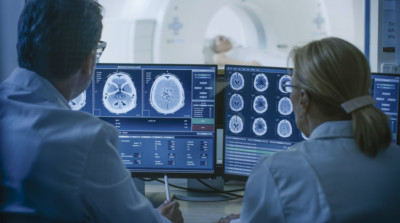Acupuncture and related interventions for the treatment of symptoms associated with carpal tunnel syndrome

Background:Carpal tunnel syndrome (CTS) is a compressive neuropathic disorder at the level of the wrist. Acupuncture and other methods that stimulate acupuncture points, such as electroacupuncture, auricular acupuncture, laser acupuncture, moxibustion, and acupressure, are used in treating CTS. Acupuncture has been recommended as a potentially useful treatment for CTS, but its effectiveness remains uncertain. We used Cochrane methodology to assess the evidence from randomised and quasi‐randomised trials of acupuncture for symptoms in people with CTS.
Objectives
Search methods
On 13 November 2017, we searched the Cochrane Neuromuscular Specialised Register, CENTRAL, MEDLINE, Embase, AMED, CINAHL Plus, DARE, HTA, and NHS EED. In addition, we searched six Korean medical databases, and three Chinese medical databases from inception to 30 April 2018. We also searched clinical trials registries for ongoing trials.
Selection criteria
We included randomised and quasi‐randomised trials examining the effects of acupuncture and related interventions on the symptoms of CTS in adults. Eligible studies specified diagnostic criteria for CTS. We included outcomes measured at least three weeks after randomisation. The included studies compared acupuncture and related interventions to placebo/sham treatments, or to active interventions, such as steroid nerve blocks, oral steroid, splints, non‐steroidal anti‐inflammatory drugs (NSAIDs), surgery and physical therapy.
Data collection and analysis
The review authors followed standard Cochrane methods.
Main results
We included 12 studies with 869 participants. Ten studies reported the primary outcome of overall clinical improvement at short‐term follow‐up (3 months or less) after randomisation. Most studies could not be combined in a meta‐analysis due to heterogeneity, and all had an unclear or high overall risk of bias.
Seven studies provided information on adverse events. Non‐serious adverse events included skin bruising with electroacupuncture and local pain after needle insertion. No serious adverse events were reported.
One study (N = 41) comparing acupuncture to sham/placebo reported change on the Boston Carpal Tunnel Questionnaire (BCTQ) Symptom Severity Scale (SSS) at three months after treatment (mean difference (MD) ‐0.23, 95% confidence interval (CI) ‐0.79 to 0.33) and the BCTQ Functional Status Scale (FSS) (MD ‐0.03, 95% CI ‐0.69 to 0.63), with no clear difference between interventions; the evidence was of low certainty. The only dropout was due to painful acupuncture. Another study of acupuncture versus placebo/sham acupuncture (N = 111) provided no usable data.
Two studies assessed laser acupuncture versus sham laser acupuncture. One study (N = 60), which was at low risk of bias, provided low‐certainty evidence of a better Global Symptom Scale (GSS) score with active treatment at four weeks after treatment (MD 7.46, 95% CI 4.71 to 10.22; range of possible GSS scores is 0 to 50) and a higher response rate (risk ratio (RR) 1.59, 95% CI 1.14 to 2.22). No serious adverse events were reported in either group. The other study (N = 25) did not assess overall symptom improvement.
One trial (N = 77) of conventional acupuncture versus oral corticosteroids provided very low‐certainty evidence of greater improvement in GSS score (scale 0 to 50) at 13 months after treatment with acupuncture (MD 8.25, 95% CI 4.12 to 12.38) and a higher responder rate (RR 1.73, 95% CI 1.22 to 2.45). Change in GSS at two weeks or four weeks after treatment showed no clear difference between groups. Adverse events occurred in 18% of the oral corticosteroid group and 5% of the acupuncture group (RR 0.29, 95% CI 0.06 to 1.32). One study comparing electroacupuncture and oral corticosteroids reported a clinically insignificant difference in change in BCTQ score at four weeks after treatment (MD ‐0.30, 95% CI ‐0.71 to 0.10; N = 52).
Combined data from two studies comparing the responder rate with acupuncture versus vitamin B12, produced a RR of 1.16 (95% CI 0.99 to 1.36; N = 100, very low‐certainty evidence). No serious adverse events occurred in either group.
One study of conventional acupuncture versus ibuprofen in which all participants wore night splints found very low‐certainty evidence of a lower symptom score on the SSS of the BCTQ with acupuncture (MD ‐5.80, 95% CI ‐7.95 to ‐3.65; N = 50) at one month after treatment. Five people had adverse events with ibuprofen and none with acupuncture.
One study of electroacupuncture versus night splints found no clear difference between the groups on the SSS of the BCTQ (MD 0.14, 95% CI ‐0.15 to 0.43; N = 60; very low‐certainty evidence). Six people had adverse events with electroacupuncture and none with splints. One study of electroacupuncture plus night splints versus night splints alone presented no difference between the groups on the SSS of the BCTQ at 17 weeks (MD ‐0.16, 95% CI ‐0.36 to 0.04; N = 181, low‐certainty evidence). No serious adverse events occurred in either group.
One study comparing acupuncture plus NSAIDs and vitamins versus NSAIDs and vitamins alone showed no clear difference on the BCTQ SSS at four weeks (MD ‐0.20, 95% CI ‐0.86 to 0.46; very low‐certainty evidence). There was no reporting on adverse events.
Authors’ conclusions
Acupuncture and laser acupuncture may have little or no effect in the short term on symptoms of CTS in comparison with placebo or sham acupuncture. It is uncertain whether acupuncture and related interventions are more or less effective in relieving symptoms of CTS than corticosteroid nerve blocks, oral corticosteroids, vitamin B12, ibuprofen, splints, or when added to NSAIDs plus vitamins, as the certainty of any conclusions from the evidence is low or very low and most evidence is short term. The included studies covered diverse interventions, had diverse designs, limited ethnic diversity, and clinical heterogeneity. High‐quality randomised controlled trials (RCTs) are necessary to rigorously assess the effects of acupuncture and related interventions upon symptoms of CTS. Based on moderate to very‐low certainty evidence, acupuncture was associated with no serious adverse events, or reported discomfort, pain, local paraesthesia and temporary skin bruises, but not all studies provided adverse event data.
Plain language summary
Acupuncture and related treatments for symptoms of carpal tunnel syndrome
Review question
Do acupuncture and related treatments improve symptoms of carpal tunnel syndrome in adults?
Background
Carpal tunnel syndrome (CTS) is a condition that may cause pain, numbness, tingling and weakness in the hand. It develops when the median nerve, which stretches from the arm into the hand, is compressed as it passes through a structure called the carpal tunnel in the wrist. A person’s job could be a factor in developing CTS and it can be an additional problem in people with other diseases, such as inflammatory arthritis. CTS can be treated by hand exercises, splinting, pain medicines, and injections. Severe CTS may be treated with surgery. People with CTS sometimes choose acupuncture and related treatments to manage the symptoms of CTS. Acupuncture uses needles to puncture the skin and stimulate acupuncture points on the body. These acupuncture points lie along the meridian, which is thought of as a pathway of energy through the body. Acupuncture‐related treatments use different methods to stimulate the acupuncture points. For example, laser acupuncture uses lasers instead of needles.
Study characteristics
We found 12 studies, which analysed 869 people with CTS. There were 148 men and 579 women (1 study did not specify gender). Participant age ranged from 18 to 85 years. The number of people in each study was between 26 and 181. CTS symptoms had been present for months or years. The studies compared needle acupuncture or laser acupuncture to placebo/sham treatments or active treatments, such as corticosteroid nerve blocks, oral corticosteroids, ibuprofen, night splints, physical therapy, and vitamin B12.
Key results and certainty of the evidence
There may be little or no evidence for any difference between acupuncture or laser acupuncture and placebo or sham for symptoms of CTS. We cannot tell whether acupuncture and related interventions are more or less effective than other methods for the treatment of CTS symptoms. The studies we found were small and there may have been problems in how they were carried out. There was not much information on each comparison. The studies found some side effects from acupuncture, such as pain and bruising. None of the harms were serious. However, not all the studies provided information on side effects. We do not have enough good information from current studies to be sure about the effects of acupuncture and related treatments for CTS. We need larger and better‐quality studies to understand any effects of acupuncture and related interventions on symptoms of CTS.
This review is up‐to‐date to 13 November 2017 for English databases and 30 April 2018 for Chinese and Korean databases.

